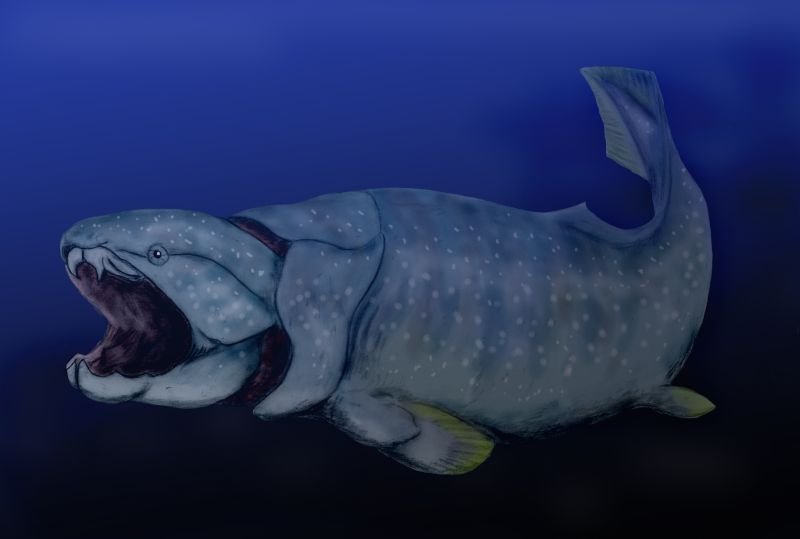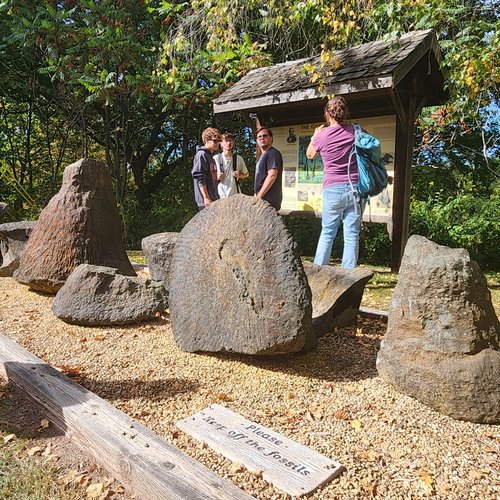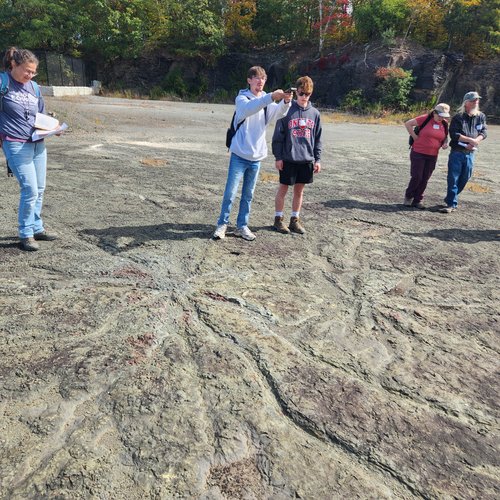How Forests Sparked Deep-Sea Life

Key Takeaways:
- Critical mass: The deep ocean didn’t have enough oxygen for animals to thrive until about 390 million years ago.
- Breath of life: The first forests provided increased oxygen and nutrients to the ocean, allowing bigger, faster animals to live in deeper waters, sparking evolution and new kinds of ecosystems.
- Cautionary tale: These findings matter because human activities are reducing ocean oxygen, creating dead zones.
About 400 million years ago, the deeper part of the ocean was a difficult place to live. With low oxygen, it was nearly a biological dead zone – life was there, but only existing in the slow lane. However, over time it changed, becoming an environment rich with biodiversity. Today, whales, sharks, invertebrates and fish thrive there. A new study published in Proceedings of the National Academy of Sciences (PNAS) identifies when and how this shift from a deep-sea dead zone happened.
“This study reinforces the importance of oxygen to the radiation of life on this planet, particularly animal life,” says Linda Ivany, a co-author and professor in the Department of Earth and Environmental Sciences at Syracuse University. “Over the past 15 years, we have seen more studies that connect the diversification of animals and their expansion into new habitats with the availability of oxygen in their settings.”
The researchers found that the deep ocean didn’t become permanently oxygenated until about 390 million years ago, much later than once thought. With more oxygen available for respiration, more and larger animals colonized the deep sea. Animals could be more energetic in places that were previously uninhabitable.
Species thrive, compete
An expanded habitat for animals in the deep ocean meant evolutionary competition.
“Animals evolved different strategies to survive, which led to new species,” says lead author Kunmanee “Mac” Bubphamanee, a University of Washington doctoral student in Earth and Space Sciences. Ivany adds, “this window of diversification includes larger and more active animals, more predators, and more creative strategies to avoid becoming prey—it’s known as the mid-Paleozoic Marine Revolution.”
What drove this transformation in deep-sea oxygen and biodiversity? It was the appearance of the first forests on land.
Forests evolved around 400 million years ago. Woody plants soaked up carbon dioxide from the atmosphere, locking carbon in trunks, roots and sediments and leaving leftover oxygen to accumulate in the atmosphere. When trees died and decayed, they left behind nutrients in sediments that washed into waterways and the ocean. Over time, surplus oxygen and nutrients mixed in the sea and penetrated its deep waters. Interestingly, New York preserves some of the very oldest fossil forests ever described, and they come from just around the time that oxygen is rising in the oceans.

The fossilized stumps of ancient trees in Gilboa, NY. These are the oldest fossil forests known on the planet, from about 390 million years ago, just as oxygen increased to levels more like today. (Photo courtesy: Linda Ivany)

Fossil “footprints” of ancient trees in Cairo, NY, showing their root networks. (Photo courtesy: Linda Ivany)
A long road to oxygen
Scientists once thought that the oceans became permanently oxygenated more than 500 million years ago when the first animals appeared in the fossil record.
The PNAS study, though, shows that ocean oxygenation happened in stages. Shallow waters near the shore were the first to be oxygenated, creating livable zones for early animals. Finally, during the Middle Devonian period—393 to 382 million years ago—enough oxygen had accumulated in the atmosphere and dissolved into seawater to enable the deep ocean to become permanently oxygen-rich.
Animals could get bigger because there was enough oxygen to consistently supply their metabolisms. And predators could now thrive in deeper waters for the same reason, making hunting and chasing possible. This set the stage for evolutionary bursts, including the rapid expansion of jawed vertebrates, or gnathostomes.
Over the past 15 or so years, several research teams have deployed geochemical tools such as iodine and molybdenum to reconstruct the ocean’s oxygen history. Each has suggested an increase in oxygen about this time, but none, alone, were without controversy. The new study adds yet another independent line of evidence, all pointing in the same direction, lending strong support to the contention that oceanic oxygen rose at this time.
The PNAS study focused on a new proxy for measuring past oxygen—selenium, an element with several isotopes of distinct mass. Selenium isotopes are recorded in sediments in different proportions, depending on oxygen levels in the sea.
The team analyzed 97 sedimentary rock samples from five continents, dating from 252 to 541 million years ago. Ivany gathered some rock samples in New York State, which was often under the sea during this period. The researchers pulverized the rocks and measured selenium isotopes, drawing on sophisticated advances in isotopic geochemistry.
“The proportion of isotopes changed pretty dramatically about 390 million years ago,” indicating a rise in oxygenation to levels more like today, says Ivany, and this time it persisted. Earlier intervals of higher oxygen correlate to times when animals first appear and begin to diversify, but oxygenation was not high enough or did not last long enough to allow for animals to fully expand into new habitats and ecologies.
Why it matters
The timing of deep-ocean oxygenation explains why life diversified when it did. But this study isn’t just about solving a puzzle from Earth’s past.
Human activities—such as fertilizer runoff fueling massive plankton blooms—are depleting oxygen in many coastal waters today. Zones of very low oxygen, or “dead zones,” are expanding in ocean regions, driving habitat and biodiversity loss.
“This research drives home the importance of oxygen in allowing for biodiversity, of animals in particular,” says Ivany.
Citation: K. Bubphamanee, M.A. Kipp, J. Meixnerová, E.E. Stüeken, L.C. Ivany, A.J. Bartholomew, T.J. Algeo, J.J. Brocks, T.W. Dahl, J. Kinsley, F.L.H. Tissot, & R. Buick, Mid-Devonian ocean oxygenation enabled the expansion of animals into deeper-water habitats, Proc. Natl. Acad. Sci. U.S.A. 122 (35) e2501342122, https://doi.org/10.1073/pnas.2501342122 (2025).
Published: Sept. 25, 2025
Media Contact: asnews@syr.edu
